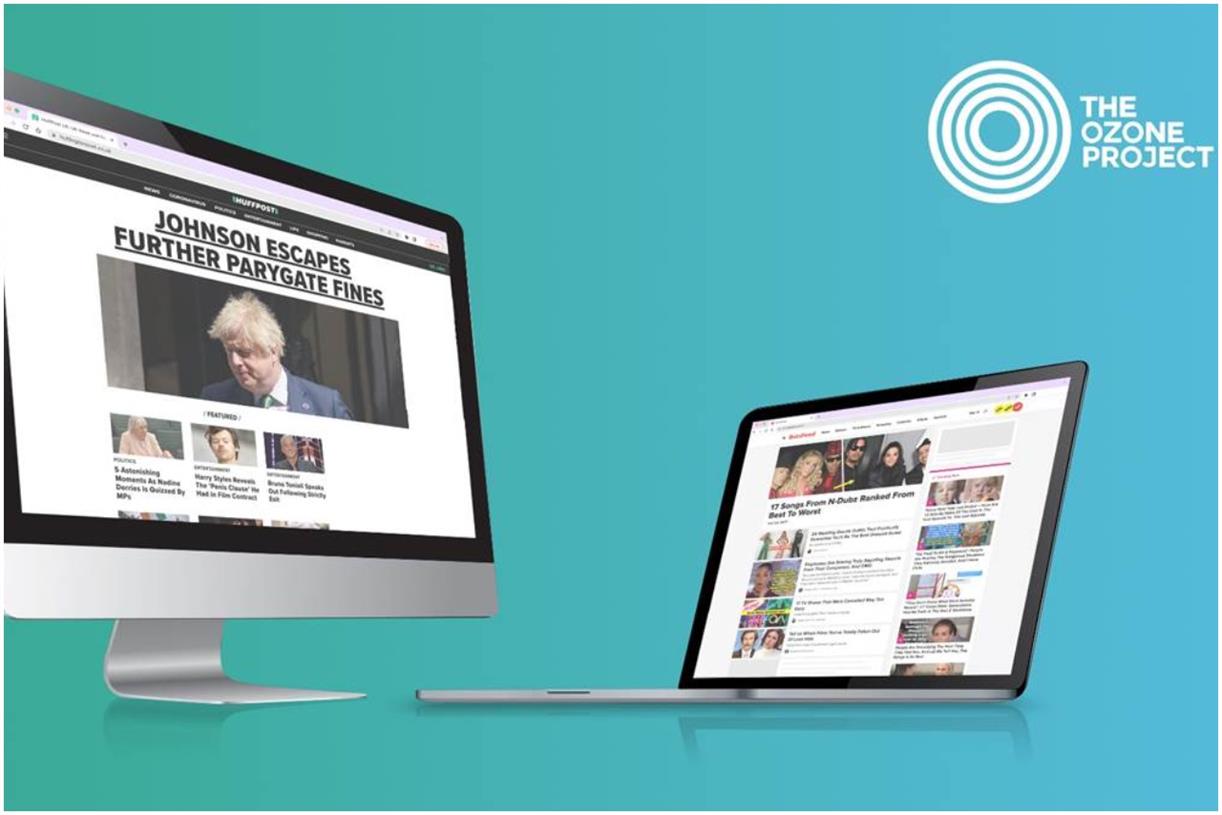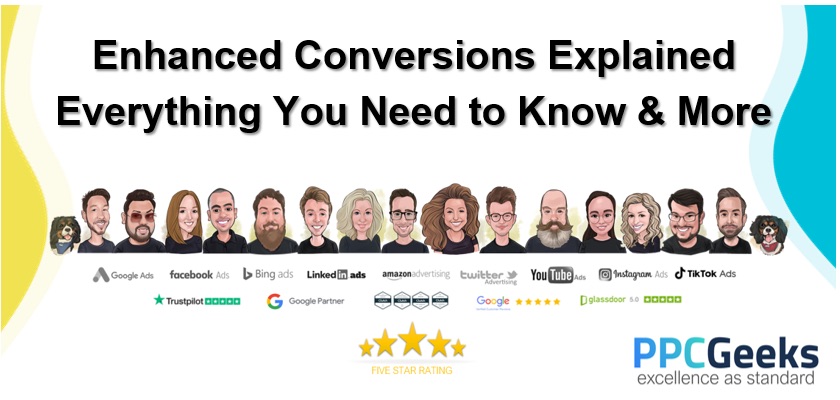14 Lead Generation Strategies for Digital Marketing Agencies to Win Clients in 2024
Crafting effective lead-generation strategies can be one of the biggest challenges for digital marketers when there’s no one to guide them. What You’ll Learn: Why Generating Leads Matters for Your Agency Inbound Lead Generation Strategies Optimize Your Agency Websites...

Crafting effective lead-generation strategies can be one of the biggest challenges for digital marketers when there’s no one to guide them.
What You’ll Learn:
Why Generating Leads Matters for Your Agency Inbound Lead Generation Strategies Optimize Your Agency Websites for Lead Conversion Turn Views into Leads with Video Content Share Gated Content (They Are Great Lead Magnets!) Don’t Skip Personalizing Your Content Boost Conversions with Smart A/B Tests Give Your Agency Website a Weekly Checkup Make Sure Your Site’s Mobile-Ready for Everyone Keep Your Keywords Fresh and Relevant Use SEO to Offer Your Lead Magnets to a Bigger Crowd Connect Faster and Convert More with Live Chats Outbound Lead Generation Strategies List Your Agency on the DAN Marketplace Today Attract Clients on Digital Marketing Agency Directories Create YouTube Videos that Get Noticed Get Social: Engage with Your Audience Where They Are 4 Tips to Find Clients for Digital Marketing Agencies Key Components of Digital-First Lead Generation StrategyDigital agency lead generation comes with its own rises and falls. As marketing trends and client behaviors change over time, you should be on the alert to ensure that you are above the trends with your lead generation strategies!
For now, here’s the key information you need to have solid lead-generation strategies for your digital marketing agency:
Fast load times are key. Google reports that just a 1-3 second delay can increase bounce rates by 32%, so it’s worth making sure your site is running smoothly. Video content drives action. According to Wyzowl, 88% of people are convinced to buy after watching a brand’s video, making it a great tool for engaging potential clients. Getting listed on the DAN Marketplace can boost your agency’s visibility and generate more leads. Gated content works. As HubSpot asserts, offering ebooks or webinars in exchange for contact information is a smart way to capture leads. Personalized content tailored to different user roles helps increase conversion rates by making sure your message resonates with the right audience. Mobile optimization is essential. Google gives priority to mobile-friendly websites, so it’s important to ensure your site works well across all devices. Regularly updating your content and keywords keeps your website ranking higher and helps attract more leads over time.Why Generating Leads Matters for Your Agency
When it comes to growing your digital marketing agency, generating leads is an absolute must, as it’s the perfect path you take to convert people into paying clients.
Sustained growth: Leads keep the momentum going, helping your business expand and maintain a steady revenue stream. Building relationships: Every lead is a potential long-term client, opening up opportunities for repeat business and deeper connections. Staying competitive: Regularly bringing in new leads ensures your agency stays relevant and ahead of the competition. Improved targeting: The more leads you gather, the more insights you gain to fine-tune your strategies and better meet client needs. Revenue stability: A consistent flow of leads helps you diversify your client base, offering financial security and room for growth.How to Generate Leads for a Digital Marketing Agency in 14 Steps
It’s time to go one by one on the 14 must-know lead generation strategies for digital marketing agencies.
It’s time to explore the 14 must-know lead generation strategies for digital marketing agencies, including these key insights:
how to optimize your website for maximum lead conversions, why SEO is essential for attracting high-quality leads, how video content can engage and convert prospects effectively, the power of personalized content in boosting audience engagement, how A/B testing can refine your strategy and drive better results.Get ready to have impressive results!
Inbound Lead Generation Strategies
1.Optimize Your Agency Websites for Lead Conversion
your website = digital storefront
So, making it user-friendly, fast, and engaging must be one of your main tasks for marketing lead generation.
It all starts with understanding your audience. Tailor your content to speak their language and address their specific needs and pain points.
You can learn from Alex Cattoni about writing killer homepage copy:
Once you’ve nailed the messaging, focus on these essential components:
Simplicity in design: Clean, uncluttered layout Clear value proposition Speed and responsiveness: Fast loading times (A 32% increase in bounce rates when page load times extend from 1 to 3 seconds) Mobile optimization Clear and compelling calls-to-action (CTAs): Easy to find Actionable and specific Newsletter signups, white paper downloads, consultation bookings2. Turn Views into Leads with Video Content
Video content means offering an engaging way to connect with your agency.
For example, according to Wyzowl’s data, 88% of respondents claim that after watching a brand’s video, they were persuaded to purchase a product or service.
But how can different types of videos transform your lead generation strategy?
Explainer videos: Simplify complex services Engaging, digestible content Often the first touchpoint for leads Testimonial videos: Build trust through storytelling Showcase client success stories Strengthen credibility Live videos (Q&As, webinars): Real-time engagement Create interactive experiences Foster community connectionA well-written blog can drive traffic, but it’s gated content like ebooks, reports, or webinars that really captures leads.
HubSpot says gated content works because you’re offering something valuable in exchange for contact details.
It’s like a fair trade: your knowledge for their email.
But the real magic happens after you’ve captured that lead. Here’s what comes next:
Personalized follow-ups: Don’t just stop at the sign-up—send tailored follow-up emails with more valuable content. Lead nurturing sequences: Use automated email series to keep them engaged and gradually introduce your services. Offer a consultation: After building trust, invite them to a demo or consultation to convert interest into action.4. Don’t Skip Personalizing Your Content
A general version of a landing page will never do you any good and won’t really increase the conversion rate since they always target a broad spectrum, which in this case, is not a good thing.
For example, a CEO and a content writer are likely looking for completely different things. So, why show them the same stuff?
You might want to offer the CEO insights on business growth strategy, while a content writer might care more about SEO tips.
By speaking directly to what they need, you make it easier for them to engage with your content, and more likely that they’ll stick around.
5. Boost Conversions with Smart A/B Tests
A/B testing is a simple but powerful way to see what’s working on your website and what isn’t. By comparing two versions of a page—whether it’s a different headline, CTA, or form length—you can figure out which one gets better results.
For example, shorter forms tend to convert better because they’re less of a hassle for visitors. If you test a longer form against a shorter one, you’ll often find that the shorter version leads to more conversions. These small tweaks can give you valuable insights and, in turn, help you generate more leads.
It’s all about making data-driven decisions to keep improving.
6. Give Your Agency Website a Weekly Checkup
If you’re like most businesses, you probably only check your website when something’s broken or a customer complains. But by then, you might already be losing potential clients without even realizing it.
A laid-back approach can leave you with slow-loading pages, broken links, or 404 errors that quietly drive visitors away.
And once they’re gone, they’re likely not coming back.
That’s why running a quick scan every week is so important. You’ll catch those hidden issues early, keep things running smoothly, and make any updates needed to improve the user experience.
7. Make Sure Your Site’s Mobile-Ready for Everyone
These days, most people are checking it on their phones. If it’s not mobile-friendly, you’re asking for trouble.
Google doesn’t just recommend mobile optimization but expects it.
Here’s a breakdown of how Google explains the importance of mobile-friendliness:
Sites optimized for mobile devices rank higher in search results. Over half of all Google searches are conducted on mobile devices. For a lot of advertisers, mobile users account for the majority of traffic. Visitors to your website are five times more likely to leave if it is not mobile-friendly.So, please do run a full website scan to spot pages that aren’t mobile-friendly. Then, work with your developer to either make your site more responsive or create a mobile-specific version.
It’s 100% worth the effort to keep those visitors engaged.
If you are not sure where to start, these are the key questions that Google wants you to answer:
Does your site load fast?Nearly half of all visitors will leave if a mobile page takes more than 3 seconds to load. Make sure your site loads quickly so visitors can navigate easily. Is it simple to use?
On small screens, it’s harder to find things. If users have to zoom in or search too much, they’ll likely leave. Keep menus simple and make everything easy to read without zooming. Is it easy to take action?
Visitors should be able to quickly contact you, search for products, or make purchases. Reduce the number of steps needed to complete forms or transactions.
8. Keep Your Keywords Fresh and Relevant
Keeping your keywords fresh is key to staying competitive. Here are a few things to think about:
Are you keeping an eye on your competitors?Which keywords are they using, and what’s driving their traffic? If it’s working for them, why not make it work for you too?
Are you using long-tail keywords?Specific phrases can target the right audience and improve your chances of ranking higher. For example, instead of just “digital marketing,” try “digital marketing strategies for agencies.”
Are you staying on top of trends?Search behavior changes over time, so it’s important to update your keywords based on what’s trending in your industry. What worked last year might not be as effective today.
Have you tried keyword tools?Tools like Google Keyword Planner or Ubersuggest can help you find new keywords and stay on top of the latest trends.
9. Use SEO to Offer Your Lead Magnets to a Bigger Crowd
It doesn’t matter how great your webpage looks—if people can’t find it, it’s not going to generate leads. That’s where SEO comes in. SEO helps get your page ranked on Google, making sure your content is visible to the right audience.
Here’s a 5-minute video specifically about SEO in 2024:
Lead magnets, like downloadable PDFs or recorded webinars, are great for capturing potential clients’ contact info in exchange for valuable content. Whether they’re not ready to buy yet or just exploring their options, lead magnets start the conversation and keep them engaged.
So, how do you create lead magnets that work? According to HubSpot, here are a few steps to follow:
Determine your target’s identity and goals. Construct, style, and label your lead magnet. Create a path for conversion. Fit buyer personalities into your lead magnet. Establish a timetable for frequent updates.By optimizing your lead magnets with SEO-friendly content, you can attract a steady stream of high-quality leads who are more likely to convert down the line.
10. Connect Faster and Convert More with Live Chats
The best way to know what your visitors need is to engage with them directly. That’s where live chats come in. In fact, research from Intercom shows a 67% boost in sales conversions when live chat is used effectively!
So, with live chat, a real person or a well-trained AI can help potential customers instantly, answering their questions on the spot. This kind of immediate engagement makes a huge difference.
Outbound Lead Generation Strategies
1. List Your Agency on DAN Marketplace
Digital Agency Network’s marketplace is a great spot for digital agencies to connect with brands looking for marketing expertise. You can find relevant projects and build long-term relationships with potential clients.
Here’s how its magic works:
Create a Profile: Start by setting up a detailed profile that showcases your services, past projects, and client reviews. Provide Quotes: When brands submit projects, you can check out the details and send tailored quotes. Start Collaborating: Once matched, engage directly with brands to discuss project specifics and begin collaborations that drive results. The DAN Marketplace also offers the chance for repeat business, helping you establish ongoing relationships rather than just one-off projects.2. Create YouTube Videos that Get Noticed
YouTube is one of the leading online video platforms, attracting millions of viewers every day. If you own a business, you can use this platform to reach a specific audience with how-to videos or any relevant content you can create.
YouTube is no longer just for entertainment; many people turn to it for product reviews and to find answers to their questions. Plus, you can add a link to your website in the video description, driving traffic back to your site.
Taking advantage of video marketing is a smart move. For example, Bold x Collective, a Toronto-based member agency, shares insightful videos on their YouTube channel that cover the latest digital marketing trends and strategies.
3.Attract Clients on Digital Marketing Agency Directories
Listing your agency in reputable directories like DAN boosts your visibility and acts as a trust signal for potential clients. So, how do you make the most of these platforms?
First, choose your directories wisely. Are they well-regarded and do they reach your target audience?
Being featured on the Digital Agency Network not only enhances your credibility but also aligns your brand with top-tier agencies.
At DAN, we simplify connections with our ‘Get Quotes’ feature. Brands share their needs and budgets, making it easier for you to match with projects that fit your expertise.
But don’t stop there. DAN is rich with industry insights, Q&As, and the latest trends. You can even share your success stories, like case studies, to showcase what makes your agency unique.
4. Engage with Your Target Audience Where They Are (Get Social!)
If you know how to promote your digital agency on social media, you can really connect with your potential clients. Social media marketing has worked wonders for many businesses, and there are tons of ways to generate leads on different platforms.
For instance, have you thought about recording podcasts? They can reach a lot of people and pop up in Google search results when folks look for related topics. You can easily share your podcasts on sites like iTunes and SoundCloud to get the word out about your services. Plus, don’t forget to share clips of your recordings on TikTok and Instagram!
Speaking of TikTok, it’s become a game changer in the digital landscape. Did you know that around half of Gen Z uses TikTok as their search engine?
That means your potential clients are likely searching for information and inspiration there.
There’s also a wealth of digital marketing content on TikTok -you’ll see an example below for inspiration- so you can showcase your expertise and engage with a younger audience in a fun and creative way.
Take Spark Social Agency, a member of DAN, for example. They do a great job of showcasing their client work on social media and sharing success stories, which helps them stay connected with their audience and build trust.
4 Tips to Find Clients for Digital Marketing Agencies
Once you’ve generated leads, the next step is converting them into paying clients. Let’s explore some practical strategies to help you move from interest to signed contracts:
Follow Up with Personalized CommunicationWhen a lead shows interest, reach out with personalized messages. Address their specific needs and explain how your agency can solve their challenges. This personal touch can make all the difference. Offer a Free Consultation or Audit
Invite leads to a free consultation or audit of their current marketing efforts. This not only demonstrates your expertise but also provides immediate value. By showing them what you can achieve, you increase the chances of sealing the deal. Create Custom Proposals
Tailor your proposals to each client’s unique business goals and challenges. A well-crafted proposal not only highlights your solutions but also shows your commitment to their success, making it easier for them to see the benefits of working with you. Nurture Relationships for Long-Term Partnerships
Conversion doesn’t end with the first deal! Once you’ve brought a client on board, nurture that relationship. Regular check-ins, performance reports, and exploring opportunities for additional services can help turn a one-time client into a loyal partner.
Key Components of Digital-First Lead Generation Strategy
The essence of digital marketing lead generation strategies lies in understanding and leveraging the digital landscape to its full potential. Here are some key components:
Data-Driven Decision MakingUsing data smartly is crucial for staying competitive. Agencies can fine-tune their lead generation by tracking customer behavior, analyzing market trends, and studying campaign results. Digital marketing tools like HubSpot, Semrush, DashThis, and Whatagraph can help you see what’s working and what needs a little tweak. Omnichannel Marketing Approach
To truly reach your audience, you need a strategy that ties together email, social media, SEO, paid ads, and more.
Your brand message should resonate across every touchpoint. Imagine a client discovering you on LinkedIn, exploring your blog, and then receiving a personalized follow-up email. Hyper-Personalization
Today’s audiences expect more than generic content. They want to feel understood.
So, you should tailor your messaging using data from CRM systems and marketing automation platforms to ensure every interaction speaks directly to your clients’ desires and pain points!
According to Accenture, 91% of consumers are more likely to engage with brands that make personalized recommendations. When your content shows you understand what they care about, you’re more likely to offer real solutions. Continuous Testing and Optimization
Lead generation isn’t a one-and-done deal. You must constantly test what works and what doesn’t, from landing page designs to email subject lines.
Always keep an eye on important metrics like conversion rates and bounce rates, and be ready to make changes along the way. The more you experiment and adapt, the better your lead generation efforts will perform.
Until Next Blog, Happy Marketing!
You’ve discovered how to generate leads for your digital marketing agency using essential strategies. From personalizing your communication and offering valuable free consultations to harnessing effective SEO practices and tapping into the dynamic world of social media, each tactic is a key player in your success story.
As you put these strategies into action and stay flexible with changing trends, you’ll find yourself building strong relationships that pave the way for long-term partnerships.
I hope you’re eager for more insights!
Don’t hesitate to explore the other marketing blogs on our website; there’s plenty more digital marketing knowledge waiting for you.
And, I’d personally love to hear your thoughts on this post if you share your ideas on LinkedIn!
Happy reading, and see you next time.

 ShanonG
ShanonG 
































